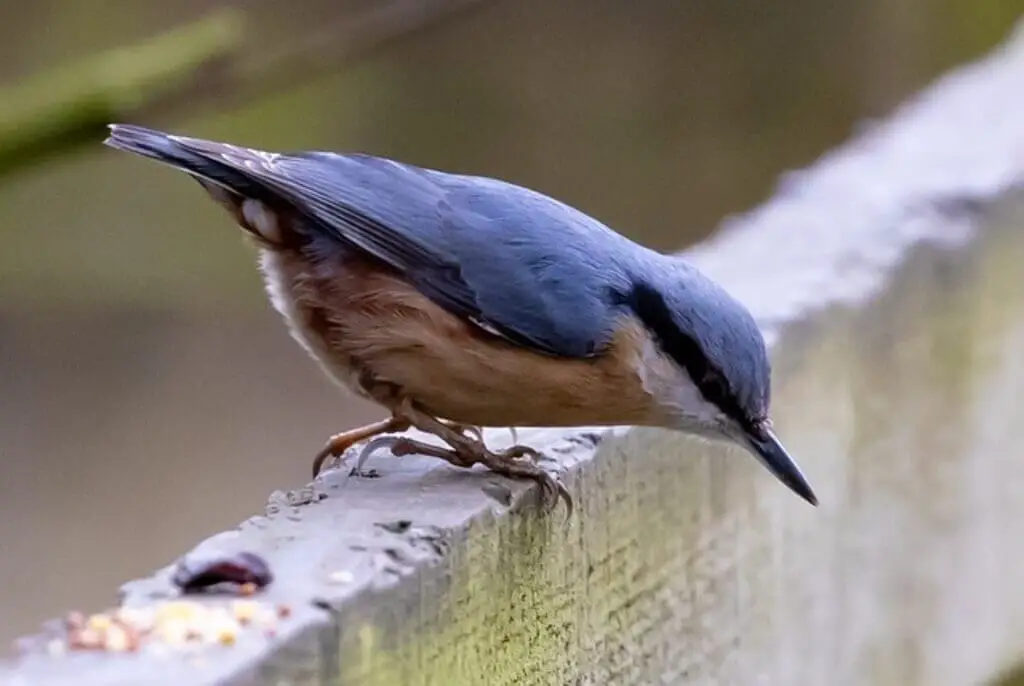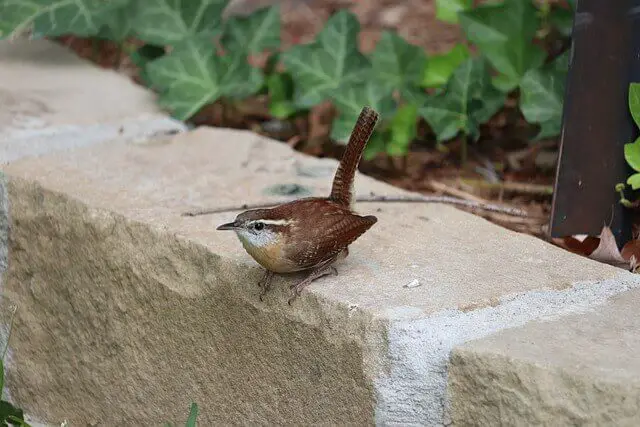If you’re a bird enthusiast, you may have come across a brown bird that looks like a nuthatch. While this bird may resemble a nuthatch, it is actually a different species with its own unique characteristics.
In this article, we will explore this brown bird in more detail, including its physical appearance, behavior, and habitat.
Whether you’re a seasoned bird watcher or simply curious about this fascinating species, read on to learn more about this brown bird that looks like a nuthatch.
Table of Contents
Nuthatch Species of North America
White-breasted Nuthatch
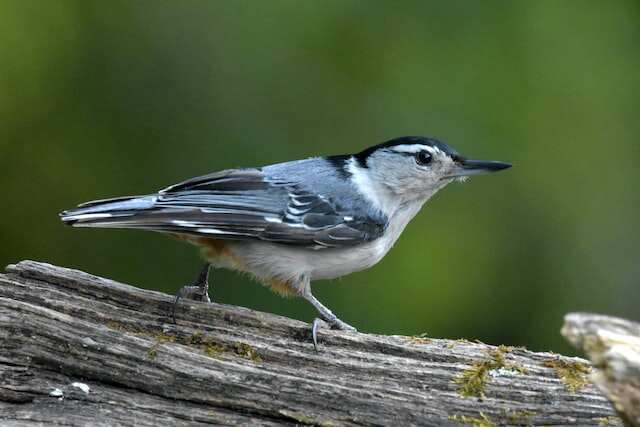
- Small songbird found throughout much of North America
- Blue-gray back, white face, black cap, and clean white underparts
- Climbs down tree trunks head-first, feeds on insects, seeds, and nuts
- Non-migratory, found in a variety of habitats, including deciduous, mixed forests, suburban areas
- Cavity nester, lays 5–9 eggs, young fledge after about three weeks
Red-breasted Nuthatch
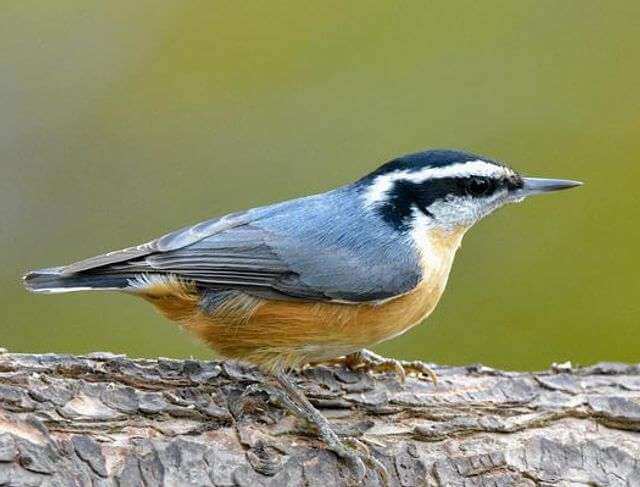
- Small songbird found in coniferous forests throughout North America
- Blue-gray back, rusty-red underparts, black and white stripes on head
- Climbs down tree trunks head-first, feeds on insects, seeds, and nuts
- Non-migratory, but may move south in large numbers during “irruption” years
- Cavity nester, lays 5–6 eggs, young fledge after about three weeks
Brown Bird That Looks Like A Nuthatch
Eurasian Treecreeper
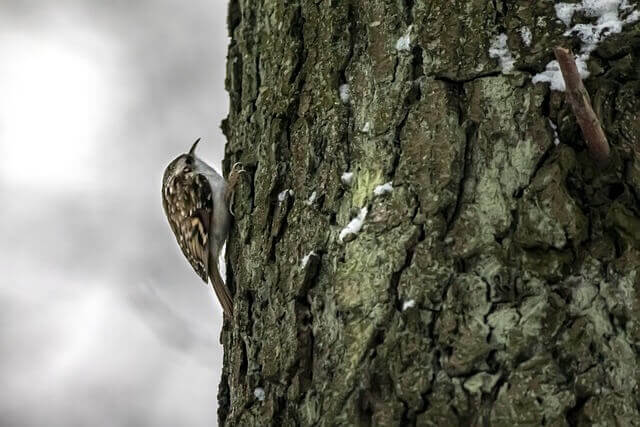
The Eurasian Treecreeper, a dainty songbird akin in size to a nuthatch, displays an exquisite appearance. Measuring around 12–14 centimeters, it boasts a beautifully mottled brown upper body, contrasting with a pristine white underbelly.
These charming birds are residents of Europe’s coniferous forests, favoring the embrace of spruce and fir trees. Their slender, curved bills are perfectly suited for extracting insects from tree bark, forming a substantial part of their diet.
Treecreepers remain steadfast in these woodlands year-round, with their numbers peaking during winter. When conifers become scarce, these resilient creatures embark on an impressive transatlantic migration to the Americas. There, they take refuge in spruce-fir forests, where accessible tree trunks provide comfort amidst North America’s winter landscapes.
| Characteristic | Measurement/Range |
|---|---|
| Length | 4.3-5.1 inches |
| Weight | 0.2-0.4 ounces |
| Wingspan | 6.7-7.5 inches |
| Diet | Insects, spiders, and their eggs, sometimes seeds |
| Habitat Range | Coniferous forests throughout Europe, and in the Americas during winter |
Brown Creepers
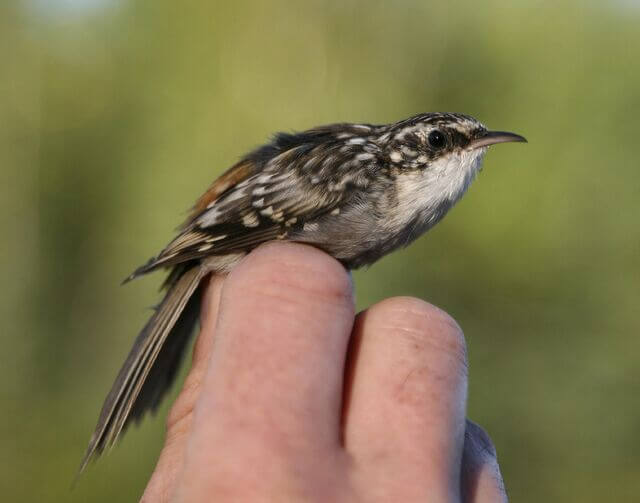
The Brown Creeper, a petite North American songbird, finds its habitat in the expansive regions of Canada, Alaska, and the northeastern and western United States. Adorned with brown plumage on its upper body adorned with subtle white speckles and white underparts, this avian species exudes understated elegance.
Sporting lengthy, slender bills with a gentle downward curve, Brown Creepers employ these tools adeptly in their quest for sustenance. As dedicated insectivores, they exhibit a versatile diet, preying on a diverse menu that includes snails, caterpillars, spiders, and other insects.
Mature forests, particularly coniferous ones, serve as their preferred breeding grounds. Brown Creepers are occasionally mistaken for nuthatches due to their shared color palette, but these charming birds distinguish themselves by their smaller stature, fewer markings, and notably longer bills in comparison to their nuthatch counterparts.
| Characteristic | Measurement/Range |
|---|---|
| Length | 4.7-5.1 inches |
| Weight | 0.3-0.4 ounces |
| Wingspan | 7.5-8.7 inches |
| Diet | Insects, spiders, and their eggs |
| Habitat Range | Deciduous and mixed forests throughout North America |
House Wren
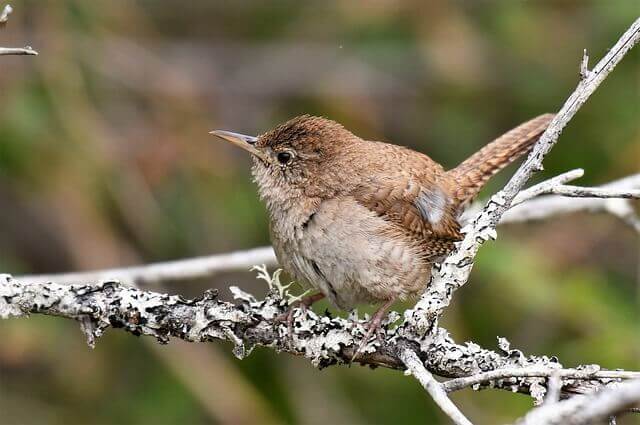
The House Wren, a tiny and energetic bird, measures only about 10 centimeters in length. It sports a plain brown plumage with subtle streaks on its upperparts, and its underbelly is pale in color. These delightful birds are widespread throughout the Americas, thriving in a variety of habitats, including woodlands, gardens, and urban areas.
House Wrens have an insect-rich diet, tirelessly foraging for spiders, caterpillars, and other small creatures. Known for their vibrant songs and melodious calls, they fill the air with their cheerful tunes during the breeding season.
These avian acrobats build their nests in cavities, including tree holes and nest boxes, often lining them with feathers. House Wrens are migratory birds, with some populations venturing south during winter to seek warmer climates. Their adaptability and lively presence make them cherished residents in many backyards across the Americas.
| Characteristic | Measurement/Range |
|---|---|
| Length | 3.9-4.7 inches |
| Weight | 0.3-0.4 ounces |
| Wingspan | 5.9-6.7 inches |
| Diet | Insects, spiders, and other small invertebrates |
| Habitat Range | Open woodlands, forest edges, and suburban areas throughout North America |
Carolina Wren
The Carolina Wren, a petite songbird, measures around 12 to 14 centimeters in length. This charming bird boasts a rich reddish-brown upper body, complemented by a creamy white underbelly, often adorned with subtle streaks. Native to the southeastern United States, it thrives in a diverse range of habitats, including woodlands, gardens, and urban areas.
The Carolina Wren is renowned for its robust, melodious song, filling the air with its distinctive call. Their diet primarily consists of insects, spiders, and seeds, which they forage for amidst leaf litter and crevices.
These resilient birds are year-round residents in their native range, with their populations remaining stable throughout the seasons. Their adaptable nature allows them to nest in various sheltered locations, from natural cavities to human-made structures.
With their vibrant plumage and cheerful tunes, Carolina Wrens bring both color and music to the American Southeast, earning them a special place in the hearts of bird enthusiasts.
| Characteristic | Measurement/Range |
|---|---|
| Length | 4.7-5.5 inches |
| Weight | 0.6-0.8 ounces |
| Wingspan | 11.0-12.2 inches |
| Diet | Insects, spiders, and other small invertebrates |
| Habitat Range | Forests, woodlands, and suburban areas throughout the eastern United States |
Brown-headed Nuthatch
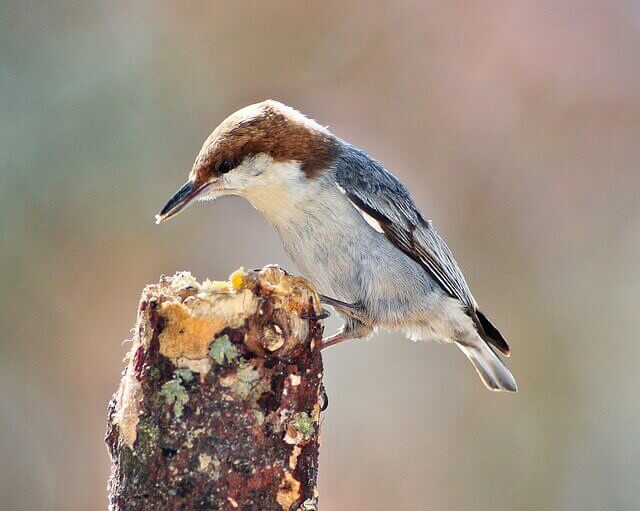
The Brown-headed Nuthatch, a petite avian species, measures a mere 10 centimeters in length. Its striking appearance features a distinctive brown crown atop a striking blue-grey plumage, making it instantly recognizable. These delightful birds are primarily found in the southeastern United States, favoring the longleaf pine forests and pine woodlands.
Feeding primarily on insects and spiders, the Brown-headed Nuthatch employs a unique foraging technique of wedging its food into tree bark crevices and using its specialized bill to extract them. Their agile acrobatics in tree canopies are a sight to behold.
These nuthatches are typically year-round residents in their preferred habitats, forming tight-knit family groups. Their cheerful calls and communal nature make them a delight for birdwatchers.
As year-round residents, they seldom undertake migrations, and their unique preferences for pine forests make them an iconic species in their southeastern range.
| Characteristic | Measurement/Range |
|---|---|
| Length | 4.3-4.7 inches |
| Weight | 0.3-0.4 ounces |
| Wingspan | 7.1-7.9 inches |
| Diet | Insects, spiders, and their eggs |
| Habitat Range | Pine forests and savannas throughout the southeastern United States |

